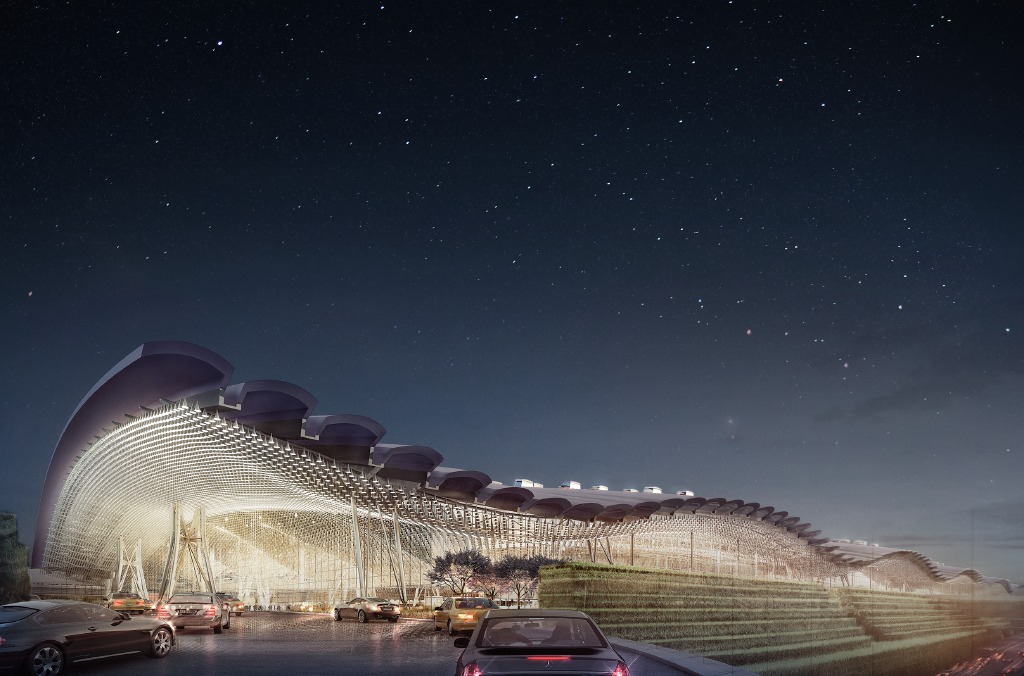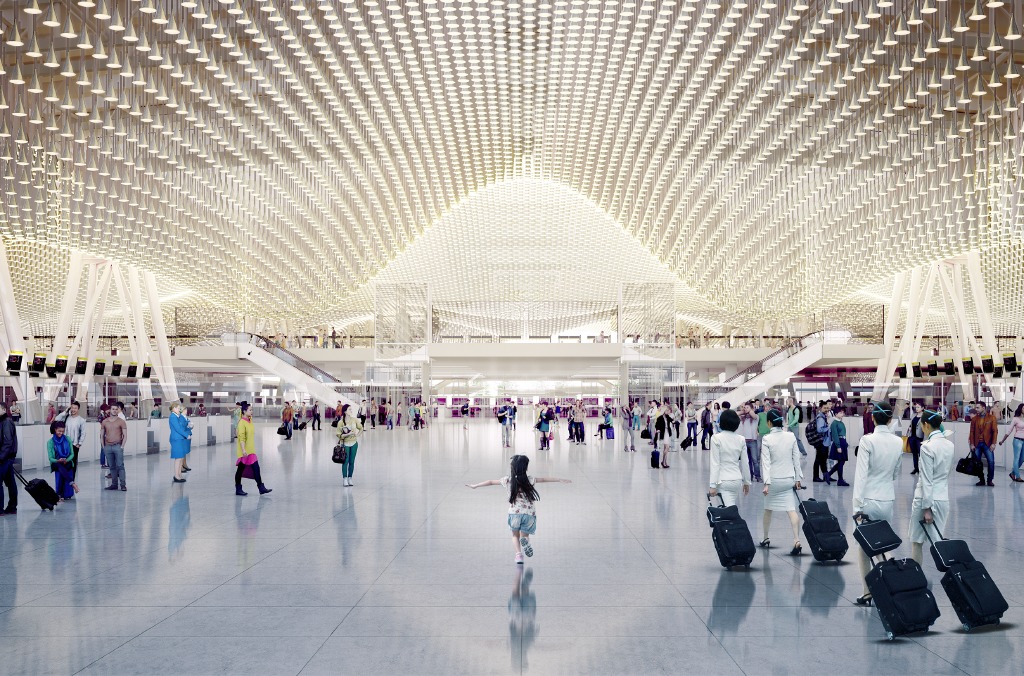Taiwan Taoyuan International Airport Terminal 3
[edit] Overview
In November 2015, it was announced that architects Rogers Stirk Harbour + Partners (RSHP) and Taiwan engineering firm CECI had won the competition to design a new Terminal 3 at Taiwan Taoyuan International Airport.
Formerly known as Chiang Kai-shek International, the airport is the largest in Taiwan and the eleventh busiest in the world. The new project will include; a terminal building, boarding gates, concourses, a multi-function building and transport infrastructure. Upon completion, the new terminal will be able to accommodate 45 million passengers a year.
The project builds on RSHP’s previous major airport experience, bringing together the flexibility of the single-span, loose-fit volume of Heathrow Terminal 5 with the flowing interior spaces of Barajas Terminal 4. It is inspired by Taiwan’s beautiful landscapes and seas, its rhythms of nature and life to create a series of unique interior places beneath an elegant hard shell roof.
The result is a unique and fluid architecture that allows for easy adaption without compromising the passenger experience or the architectural integrity. The dynamic interior celebrates the nature of the ever-changing spaces below; whether grand, intimate, uniform or dramatic.
The terminal building will be the first of a new generation, offering arriving passengers a similar spatial experience to those departing. Its rational plan arrangement is forecast to deliver minimum connection times of just 40 minutes, with simple way-finding and airside connectivity.
Ivan Harbour, Partner at RSHP said “Our proposal is focussed on a passenger’s experience with a deliberate strategy to absorb constant future change, whilst always retaining the integrity of its unique design. The terminal will be designed to meet the highest sustainability criteria; holistic engineering and architecture.
“We have created a rationally planned and easy to use airport that will be characterised by a flowing sequence of beautifully lit, acoustically comfortable and well-proportioned spaces. It will be an airport where the drama of the spatial experience is shared by all, at all times. The approach to the airport and the open spaces within it will have an urban quality akin to a city centre. Addressing these spaces there will be a variety of buildings that, together with the new and existing terminals, will form the heart of a new compact, vibrant ‘aero’ city.”
--RSHP
[edit] Related articles on Desinging Buildings Wiki
- Airports.
- CIBSE Case Study: Christchurch International Airport.
- Gatwick second runway.
- Heathrow Terminal 5.
- Hong Kong Boundary Crossing.
- London City Airport expansion.
- McArthurGlen Designer Outlet Ashford.
- One Park Taipei.
- Madrid Barajas Airport.
- Procurement of Heathrow T5.
- Thames estuary hub airport.
Featured articles and news
Construction Skills Mission Board launch sector drive
Newly formed government and industry collaboration set strategy for recruiting an additional 100,000 construction workers a year.
New Architects Code comes into effect in September 2025
ARB Architects Code of Conduct and Practice available with ongoing consultation regarding guidance.
Welsh Skills Body (Medr) launches ambitious plan
The new skills body brings together funding and regulation of tertiary education and research for the devolved nation.
Paul Gandy FCIOB announced as next CIOB President
Former Tilbury Douglas CEO takes helm.
UK Infrastructure: A 10 Year Strategy. In brief with reactions
With the National Infrastructure and Service Transformation Authority (NISTA).
Ebenezer Howard: inventor of the garden city. Book review.
The Grenfell Tower fire, eight years on
A time to pause and reflect as Dubai tower block fire reported just before anniversary.
Airtightness Topic Guide BSRIA TG 27/2025
Explaining the basics of airtightness, what it is, why it's important, when it's required and how it's carried out.
Construction contract awards hit lowest point of 2025
Plummeting for second consecutive month, intensifying concerns for housing and infrastructure goals.
Understanding Mental Health in the Built Environment 2025
Examining the state of mental health in construction, shedding light on levels of stress, anxiety and depression.
The benefits of engaging with insulation manufacturers
When considering ground floor constructions.
Lighting Industry endorses Blueprint for Electrification
The Lighting Industry Association fully supports the ECA Blueprint as a timely, urgent call to action.
BSRIA Sentinel Clerk of Works Training Case Study
Strengthening expertise to enhance service delivery with integrated cutting-edge industry knowledge.
Impact report from the Supply Chain Sustainability School
Free sustainability skills, training and support delivered to thousands of UK companies to help cut carbon.
The Building Safety Forum at the Installershow 2025
With speakers confirmed for 24 June as part of Building Safety Week.
The UK’s largest air pollution campaign.
Future Homes Standard, now includes solar, but what else?
Will the new standard, due to in the Autumn, go far enough in terms of performance ?
BSRIA Briefing: Cleaner Air, Better tomorrow
A look back at issues relating to inside and outside air quality, discussed during the BSRIA briefing in 2023.
Restoring Abbotsford's hothouse
Bringing the writer Walter Scott's garden to life.
Reflections on the spending review with CIAT.




























